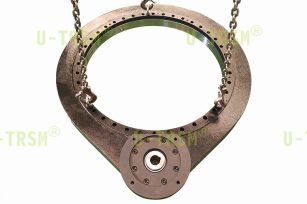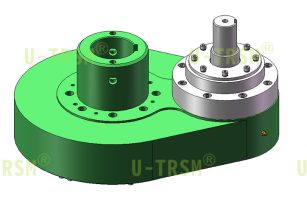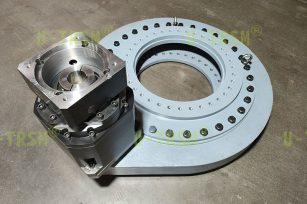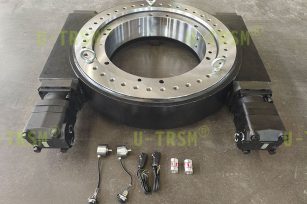Latest Products
We keep on updating and iterating our products, optimizing the structural design and creating a more scientific and reliable slewing drive device.
-
 Selection and characteristics of slewing d...
Selection and characteristics of slewing d...This slewing drive is used in automated mixing equipment. The customer requires that it rotate in the same direction ...
Detailed instructions Send mail -
 Analysis of the high speed rotating double...
Analysis of the high speed rotating double...This double row ball gear type slew drive is used in automation equipment. The customer requires ultra-high speed ope...
Detailed instructions Send mail -
 30855 slew drive assembly: precise protect...
30855 slew drive assembly: precise protect...Introduction In the field of industrial transmission, U-TRSM has always been a leader in innovation, committed...
Detailed instructions Send mail -
 High load slewing drive solution for deep ...
High load slewing drive solution for deep ...This slewing drive is used in marine machinery and equipment, suitable for underwater locations at depths of up to 30...
Detailed instructions Send mail
A brief analysis of heat dissipation methods for high-speed spur gear slew drives
Publish time:2025/08/05 News Views:33
In the slew drive designed by U-TRSM, the core components are a combination of toothed slewing bearings and gears. Recently, many customers have asked questions about heat dissipation. The key factors for generating heat in slew drives are friction, materials, and the external environment. When the rotational speed is too high, the instantaneous temperature of the gear meshing rises sharply, increasing the risk of lubricant carbonisation. Gear thermal expansion causes a decrease in meshing accuracy and increased vibration, as well as the failure of traditional sealing and lubrication systems.
Based on the above circumstances, U-TRSM design engineers developed a systematic heat dissipation solution for the slew drives:
The design of slewing bearings focuses primarily on the lubrication and heat dissipation of the balls. Non-rotating components are designed with upper and lower two parts. Oil grooves are provided at the bottom of the channel, and multiple symmetrical oil holes are provided on the upper end face. The lower end of the lower channel is enlarged to form a passageway, which is filled with high conductivity lubricating oil under pressure and can be quickly discharged from the passageway opening.
The slewing bearing and housing are sealed with sealing strips or dust shields to prevent oil splashing.
At the gear meshing point, oil holes are set directly to the meshing position, and high conductivity coefficient lubricating oil with pressure is injected directly into the meshing position to achieve the effect of rapid cooling.
An oil drain port is set up on the housing to quickly drain the oil at the meshing position of the slewing bearing channel and the gear, and the oil is recirculated after heat dissipation.
Pinions usually rotate quickly and are made of carburized steel.
Design temperature sensors at the housing and slewing bearing positions to monitor component temperatures in real time and control the temperature of the lubricating oil.
U-TRSM has demonstrated systematic technical strength and engineering capabilities in the field of non-standard slew drive design, and its core advantages are reflected in the following aspects:
Customised design methodology: research and development based on customer needs, modular design system.
Core technological innovation: high-precision gear processing technology, patent for special rotation mechanism.
- The difference between spur gear slewing b...
- Simple Analysis Of Factors Affecting Trans...
- How should the slewing drive be maintained?
- Why use thread fastening glue for spur gea...
- Analysis Of Five Brake Locking Devices Dri...
- What material is the seal on the slewing r...
- How to maintain the slew drives used in co...
- What are the advantages of using planetary...










